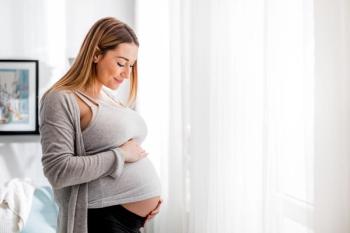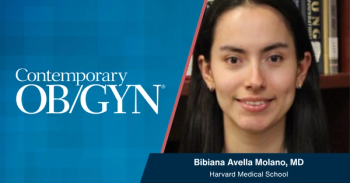
Today's Treatments: Medical, Surgical, & in Partnership
OBGYN.net Conference CoverageFrom the 5th International Symposium onGnRH Analogues in Cancer and Human Reproduction in Geneva, Switzerland
"Thank you very much, Professor Timor, for that introduction. The goal of my lecture today is to give my opinion on endometriosis and give you an overview of all the medical, surgical, and combined therapy with the overview of the literature. The objectives of medical, surgical, and combined therapy are to understand all of the available treatment options and to know the aspirations of individual women. At the present time there are three options - medical, surgical, and combined medical and surgical therapy.
Many, many medical therapies have been proposed, and if you look at the literature in 1998, you can use Danazol, progestogens, gestrinone, contraceptives, analgesics, and GnRH agonists, and in the future other molecules like GnRH antagonists, inhibitors of aromatase, and the new anti-oestrogens will be on clinical trial.
First is Danazol, which is related to testosterone, and its mode of action is well known - it creates a hypo-oestrogenic status, but also a hyperandrogenic environment. It reduces the efficacy, it reduces the endometriotic implants from 90% to 51%, and it gives good relief of the symptoms - especially for the pain - in 63% of people, but there is no proven effect on fertility and prevention of recurrence. And everybody knows very well that there are well known androgenic side effects of the Danazol like hirsutism, weight gain, oily skin/hair, acne, voice change, adverse effects on lipids, and hot flashes.
Hypoestrogenic agents are mixtures of old and new agents. First, we have the progestogens, which are related to testosterone like norethindrone, dienogest, and gestagen, and the second subgroup is related to progesterone-like acetate of medroxyprogesterone and may just well be dydrogesterone. Their mode of action is also to create a hypo-oestrogenic environment, but in this case, the environment is also hypo-oestrogenic. It causes initial breakdown of endometriotic tissue, leading to atrophy. It reduces the endometriotic implants and relief of the symptoms, but here there is also no proven effect on fertility and prevention of recurrence. The side effects are the same side effects of the progestogenic agents - weight gain, mood changes, breakthrough bleeding, fluid retention, and possibly an adverse effect on lipids. It could be that in some instances there is a delayed cycle recovery, with continued amenorrhoea and anovulation. The third group is the group of oral contraceptive agents, and again, in this group you can find a mixture of old and new agents. The mode of action is similar. It's the inhibition of the hypothalamic pituitary ovarian axis leading to ovarian suppression. If you look at the literature, there's existing data largely published from non-comparative subjective studies using old preparations. Data on newer preparations are limited. There's some suggestion of symptomatic improvement with short-term use, and I will not repeat all the well-known side effects from the oral contraceptives on lipid coagulation and so on.
Then there's gestrinone, which is also related to testosterone. The mode of action is quite similar to Danazol. It creates a hypo-oestrogenic but hyper-androgenic environment. It blocks the LH surge and pulsatile gonadotrophin release. Its efficacy is similar to the other drugs. It reduces the endometriotic implants, it improves symptomatic relief, but again, there is no proven effect on fertility and prevention of recurrence. Side effects are the androgenic ones, as well as the anti-gonadotrophic ones like hot flashes, decreased libido, and reduction in breast size, as well as breakthrough bleeding and adverse effect on lipids.
In the group of analgesics, ibuprofen and naproxen are the most widely used, and their efficacy is said to provide pain relief for symptoms. They relieve the symptoms, but they don't treat the endometriosis, and the side effect of this type of medication is induced gastrointestinal disturbances. Everyone knows that in the group of widely-used GnRH agonists, its peptide analogues of the naturally occurring hormone GnRH and the mode of action is the inhibition of gonadotrophin secretion leading to a fall in oestradiol concentration. The efficacy is to reduce the endometrial implants and to improve the suppression against the pain, but again, there is no proven effect on fertility and on the recurrence of the disease. Side effects are well known, and they're due to the low level of oestradiol - hot flashes, sweating, loss of libido, mood changes, and loss in bone mineral density.
Coming to the surgical treatment, the objectives of surgical treatment are to relieve symptoms, restore fertility, remove - if it's possible - endometriotic implants, and delay recurrence of the disease. In the majority of cases, laparoscopic surgery is indicated and more radical surgery by laparotomy will be restricted to selected cases, taking into account the degree of recurrence, the age of the patient, and so on. Laparoscopic surgery allows not only the diagnosis, but also the therapeutic procedures, and in my mind, that's a cop out to just do diagnostic laparoscopy and not to treat the lesions that are diagnosed. The goal is to eradicate visible disease by removal, vaporization, or destruction in order to restore the normal anatomy. Another goal is pain relief, which is variable and, unfortunately, data on long-term follow-up is lacking.
We have recently seen a study from our host, Macoux and Mell, suggesting that mild and moderate endometriosis can be treated by laparoscopic destruction with a high pregnancy rate, meaning laparoscopic surgery improves the fertility rate. Radical surgery is indicated for intractable pain in women who have completed their families or where conservative surgery has failed but, in the case of radical surgery, the main concern for the clinician is to prescribe the hormonal replacement therapy after such surgery in young women. Many, many procedures have been described for the pelvic pain, but there is a lack of evidence from randomized control trials. Only one, from a laparoscopic surgeon two years ago, described the advantages of laparoscopic destruction of endometriosis and the improvement in pain relief, but there is a lack of control trials.
Coming to the combination of medical and surgical therapy, pre- or post-operative medical therapy is useful in treating inflammatory peritoneal disease and in reducing ovarian endometrioma size, and that has been widely described. Ablation at initial laparoscopy followed by medical therapy can result in successful pain relief, but long-term results are unknown. Effects on overall fertility rates are unproven, and recurrence of disease and symptoms occurs.
Is there a place for assisted reproduction, and if yes, then where? This problem will be addressed later in the same symposium by one of the speakers. In conclusion, ladies and gentlemen, no treatment option is ideal. Many treatments delay fertility, differing degrees of side effects have been described, recurrence rates are high following short-term medical therapy, and surgical therapy doesn't prevent recurrence. Finally, and this is my last slide, in the absence of satisfactory evidence based medicine, there is an overriding need to take into account all available options when considering individual women's treatment expectations.
Thank you very much for your attention."
Newsletter
Get the latest clinical updates, case studies, and expert commentary in obstetric and gynecologic care. Sign up now to stay informed.




















